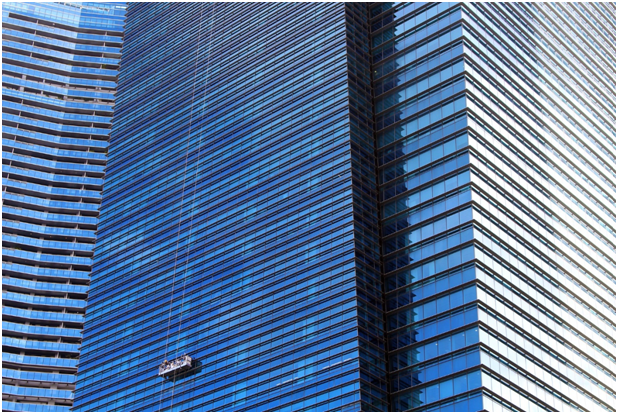Whenever a business is experiencing major growth, it’s easy to tell. Their stock price will be up on Wall Street. Their quarterly revenue will be off the charts. Everyone from the CEO to the office administrator will be in a great mood. Most of all, you’ll probably see that business looking for a bigger space.

Finding the right type of building when your business is growing is anything but easy. Sure – that fresh stream of revenue means you can probably afford it. But how do really know which space will support your continued growth? In this post, we’ll explore some of the most important considerations you need to think about when you’re ready to move into a bigger workspace.
First Choice: Rent or Buy
The first key choice you’re going to have to make when you’re ready to move is to rent or buy your new building. Both hold some distinct advantages and disadvantages you need to be aware of.
The Case for Renting
Opting to rent can be a great way to save money in the long run. Some of the ways that renting a workspace can keep money in your account include:
- No or low costs for maintenance
- No property taxes or insurance costs to pay
- No loss of capital if the property loses value
- Some utilities may be included
With renting, you also aren’t locked into the property long-term. When your lease is up, if the building no longer suits your needs, you can simply move to another building. If your business grows at a faster rate than you anticipate, this can be a huge benefit.
However, if you opt to rent, you’re at your landlord’s mercy. They can set whatever conditions they want and you have to abide by them. In some cases, your landlord can terminate your lease with little warning.
The Case for Buying
When you own your space, you have several advantages that you just don’t get with renting. Besides being able to do whatever you want with your property (within the boundaries of the law), your property becomes an investment that can actually grow in value over time. Additionally, if you outgrow your current space, you have the potential to just build onto it. You don’t have to move locations every single time you grow.
With that being said, there’s no getting around how expensive owning property can be. Most of the costs you save on renting are now your responsibility. There may be additional costs as well. Finally, it simply takes longer to qualify to buy than it does to rent. If you want to move quickly, this may have the time to wait.
Buy Existing or Opt for New Construction
If you’ve decided that buying is the route you want to go, your next major decision point is going to be whether to purchase a building that already exists or have one built from scratch. Most businesses simply try to find a building that’s already complete but you shouldn’t discount a new build until you’ve considered the following.
The Case for an Existing Building
The main two advantages you get from purchasing an existing property are convenience and saving time. As far as convenience goes, you can easily select which neighborhood or business district you want to be in, and find buildings available for purchase in those areas. Additionally, your GPS data will already be in Google maps, so employees and customers will have an easy time finding you.
However, opting to buy pre-existing has some real drawbacks too. There may be some features included that you don’t need but have to pay for anyway. Since most buildings in the U.S. are at least 40-years-old, according to Realtor Magazine, you have to worry about degraded systems. Forty years is plenty of time for the electrical wiring, plumbing, and HVAC systems to erode. Fixing and maintaining these old systems could cost you far more than you expect.
The Case for a New Construction
On the other end of the spectrum, choosing to have your new office space built from scratch can give you a lot more flexibility. You get to choose exactly what you want, from total square footage to how many cubicles you have. You can also be sure that you’ll get the latest heating, cooling, plumbing, and electrical systems available. This can save you a lot of money on maintenance and insurance costs.
However, new construction projects pose some unique challenges for businesses. The most obvious is the time. Construction typically lasts a minimum of six months, though it could be longer. You also have to find and purchase the land you want your building to be housed on. Finally, it’s in your best interest to take additional steps to ensure the builders meet their obligations or risk getting stuck with a building that doesn’t fulfill your vision.
Making the Right Decision for Your Company
There’s no right or wrong decision you can make – only ones that have more or fewer advantages than disadvantages. By far, the two biggest factors you will need to consider are money and time. How much you have to spend, how long you can afford to wait, and how long you’ll be in your new space will most likely be the deciding factors for you.